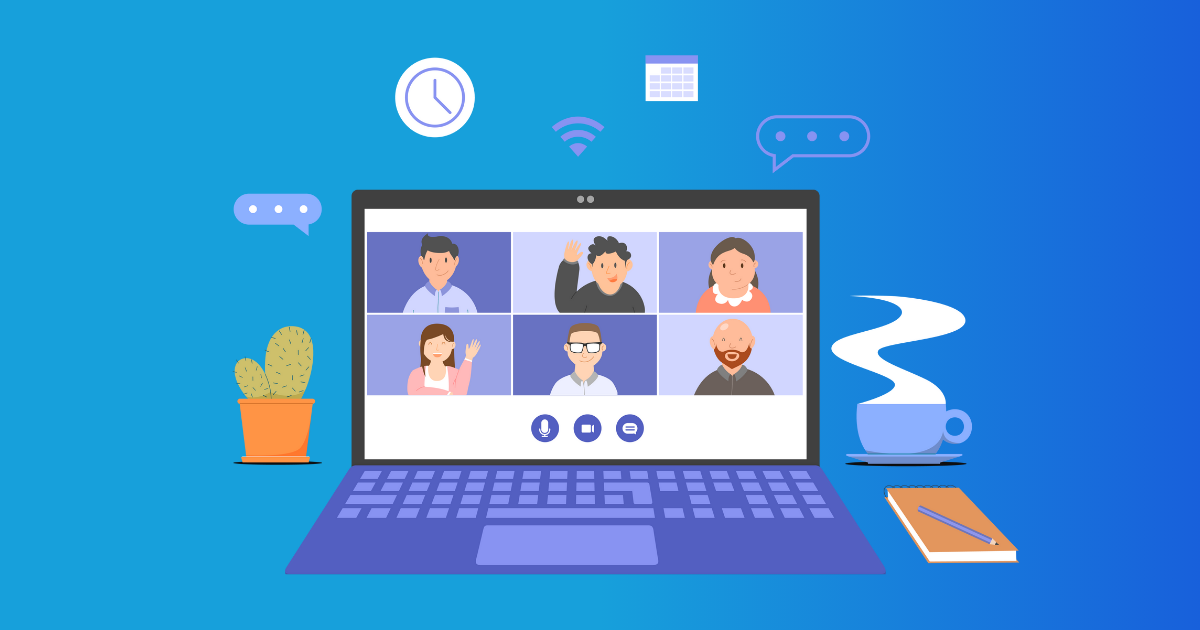Table of Contents
- Understanding Jitsi Camera Flip and Why Customize It
- Real-World Use Case: Adapting Flip Camera SDK for a Telemedicine App
- Step 1: Setup Your Jitsi Meet Mobile SDK Environment
- Step 2: Understanding the SDK’s Camera Flip Mechanism
- Step 3: Add a Custom Button to Trigger Camera Flip
- Step 4: Implement the Camera Flip Logic with Preview Correction
- Android Example:
- iOS Example (Swift):
- Step 5: Fix Reverse Camera Preview Issues
- Step 6: Testing and Validating Your Custom Flip
- Step 7: Optional Improvements and Advanced Tips
- Conclusion
- Ready to revamp your Jitsi Meet app?
- References
- FAQs
- Tags
So, you’re using the Jitsi Meet Mobile SDK for video chats and you fancy adding a camera flip feature that’s a bit more custom than what it offers straight out of the box. Jitsi Camera Flip lets users seamlessly switch between cameras during a call. But maybe their default controls don’t quite mesh with your app’s vibe. No worries, this guide has your back, walking you through setting up a custom camera flip, tackling quirks like reversing the feed or managing that mirror effect.
We’ve broken it down into easy-to-follow steps perfect for beginners and backed it all up with real-life wisdom from wrangling with Jitsi. By the end, you’ll be flipping cameras smoothly and keeping everything stable and top-notch.
Understanding Jitsi Camera Flip and Why Customize It
Right now, Jitsi Meet’s Mobile SDK gives you basic camera flipping between front and back, thanks to the WebRTC framework. But here’s the catch: sometimes you need a little more control. Here’s when you might need to pimp it:
- You want slick custom buttons or gestures for flipping.
- Your app needs strict management over the jitsi mobile ui mirror, maybe to get mirror selfies right.
- Issues like reverse camera preview or unwanted mirroring pop up.
- You want to jazz up how your video stream flows—for special effects, overlays, or whatever.
These tweaks mean your users won’t get confused by upside-down visuals, making the transition between cameras buttery smooth. Must-haves for apps where video calls are the bread and butter—like in telemedicine, customer support, or online tutoring.
Real-World Use Case: Adapting Flip Camera SDK for a Telemedicine App
Picture this: in a telemedicine app, doctors needed a camera flip that didn’t mirror rear camera previews. The default Jitsi flip was throwing everybody off. Imagine trying to showcase documents or instruments and getting a mirrored mess instead. Tinkering with the camera flip to manage the mirroring fixed the issue:
- The front camera went with the mirrored view, perfect for selfies.
- The rear camera stuck with a plain view minus the mirror madness.
It was a game-changer, boosting image clarity and grinding down the friction during patient-doctor interactions.
Step 1: Setup Your Jitsi Meet Mobile SDK Environment
Before diving deep, ensure your Jitsi Meet Mobile SDK is all set up in your project:
- For Android, follow the official setup via Gradle dependencies and tweak your app manifest.
- For iOS, snag it with CocoaPods or Swift Package Manager, then ensure camera permissions are there in
Info.plist.
You’ll want to work with at least version 3.x of the Jitsi SDK for access to the latest video and camera goodies.
Need full setup guidance? Check Jitsi’s official docs here: Jitsi Meet Mobile SDK - Official Docs and Install Jitsi Meet on Ubuntu.
Step 2: Understanding the SDK’s Camera Flip Mechanism
In Jitsi Mobile SDK, the camera flip juggles between VideoCapturer and CameraVideoCapturer classes from WebRTC. The lowdown is:
- The camera’s a
VideoCapturerthat snags video frames. - Switching cameras flips the source between front and back.
- UI mirroring, usually a tweak for horizontally mirroring previews, is typically for the front camera.
Now, the capturer class has the switchCamera() helper, but if you want custom UI or to tweak post-flip behavior, that’s where it falls short.
Step 3: Add a Custom Button to Trigger Camera Flip
First off, add a custom button or UI doohickey in your app for users to flip the camera. Something like this:
Button flipCameraButton = findViewById(R.id.flip_camera_button);
flipCameraButton.setOnClickListener(v -> {
toggleCameraFlip();
});And for iOS Swift:
flipCameraButton.addTarget(self, action: #selector(toggleCameraFlip), for: .touchUpInside)Make sure it’s easy to spot and use, so users know where to tap during a call.
Step 4: Implement the Camera Flip Logic with Preview Correction
Alright, onto the main bit: implement the toggleCameraFlip method to handle the capturer and preview renderer.
Android Example:
private CameraVideoCapturer videoCapturer;
private VideoRenderer.Callbacks localRenderer;
private boolean isFrontCamera = true;
private void toggleCameraFlip() {
if (videoCapturer == null) {
Log.e(TAG, "Video capturer not initialized");
return;
}
videoCapturer.switchCamera(new CameraVideoCapturer.CameraSwitchHandler() {
@Override
public void onCameraSwitchDone(boolean isFront) {
isFrontCamera = isFront;
adjustMirrorEffect(isFrontCamera);
}
@Override
public void onCameraSwitchError(String error) {
Log.e(TAG, "Camera switch error: " + error);
}
});
}
private void adjustMirrorEffect(boolean isFront) {
if (localRenderer != null) {
if (isFront) {
// Apply mirror effect just for the front camera preview
localRenderer.setMirror(true);
} else {
// No mirror effect for the rear camera preview
localRenderer.setMirror(false);
}
}
}iOS Example (Swift):
var videoCapturer: RTCCameraVideoCapturer!
var isFrontCamera = true
@objc func toggleCameraFlip() {
guard let capturer = videoCapturer else {
print("Video capturer not initialized");
return;
}
capturer.captureSession.beginConfiguration();
defer { capturer.captureSession.commitConfiguration() }
let newPosition: AVCaptureDevice.Position = isFrontCamera ? .back : .front
let devices = RTCCameraVideoCapturer.captureDevices();
guard let device = devices.first(where: { $0.position == newPosition }) else { return }
let formats = RTCCameraVideoCapturer.supportedFormats(for: device);
let fps = Int(CMTimeGetSeconds(formats.first!.videoSupportedFrameRateRanges.first!.maxFrameDuration));
capturer.stopCapture {
capturer.startCapture(with: device, format: formats.first!, fps: fps)
}
isFrontCamera.toggle();
adjustMirrorEffect(isFrontCamera: isFrontCamera);
}
func adjustMirrorEffect(isFrontCamera: Bool) {
if let videoView = localVideoView {
videoView.shouldMirror = isFrontCamera;
}
}What’s handled here:
- Swapping out the camera with the SDK’s capturer switch or restarting the capture with a new device.
- Tweaking the mirror effect so it only happens for front camera previews.
- Handling any errors and double-checking initialization.
Step 5: Fix Reverse Camera Preview Issues
A sticky issue? Reverse camera preview—where the back camera looks all flipped or mirrored wrong after switching. This happens when mirror effects aren’t on point, or the video rotation’s off.
To fix:
- Ensure rear camera mirror settings are false.
- Adjust the rotation on your video rendering layer if it’s needed.
- Be mindful of device quirks; some Android devices demand manual rotation due to sensor differences.
Example for Android:
if (!isFrontCamera) {
// Rotate the preview layer 180 degrees if necessary
localRenderer.setRotation(180);
} else {
localRenderer.setRotation(0);
}Experiment a bit based on what your target devices need.
Step 6: Testing and Validating Your Custom Flip
Thorough testing is your friend:
- Flip back and forth between cameras like it’s second nature.
- Check the front camera UI mirror toggles correctly.
- Make sure no flipped or reversed preview weirdness crops up.
- Test on multiple devices across iOS and Android ‘cause camera APIs and hardware seriously differ.
- Try it out in real call situations with different network speeds and camera resolutions.
Log it up to debug any switch events and states.
Step 7: Optional Improvements and Advanced Tips
- Custom Animation on Flip: Smooth transition animations boost your UI game.
- Gesture-based Flip: Let users swipe to flip, fancy right?
- Handle Permissions: After a flip, you may need to nudge camera permissions again.
- Update Video Stats: Use video stats to inform users during a flip for better UX.
- Integrate with Jitsi Events: Luke, use the Jitsi SDK’s conference events—trigger flip-related UI revamps seamlessly.
Conclusion
Adding a custom Jitsi Camera Flip in the Jitsi Meet Mobile SDK ups your app’s game by giving you full play over video previews and camera flips. Addressing quirky stuff like jitsi mobile ui mirror and fixing reverse camera previews spruces up the visual experience for everyone.
This guide makes sure you’re all set to customize flip controls, nail flip logic, and adjust UI mirroring seamlessly for both Android and iOS.
Ready to revamp your Jitsi Meet app?
Get moving with your custom camera flip and make your video feature truly unique. Need detailed help or professional integration support for Jitsi SDK on a larger scale? Reach out anytime!
References
- Jitsi Meet Mobile SDK - Official Docs
- WebRTC Camera Switch Best Practices
- Android Camera and Video Rendering Orientation
- Record Meetings on Jitsi
FAQs
-
What is Jitsi Camera Flip in the Mobile SDK?
This feature lets people switch between front and back cameras during video calls in the Jitsi Mobile SDK. -
How can I implement a custom camera flip in Jitsi Mobile SDK?
By tweaking the video capturer, cooking up custom UI controls, and managing mirrored previews right through SDK APIs. -
What issues can occur with reverse camera preview, and how to fix them?
Previews may look flipped or mirrored wrong. Fix it by adjusting mirror flags and rotating the preview per camera. -
Is it possible to customize the flip camera SDK beyond default features?
Yes, it’s open-source, so you can customize flip, UI, and preview rendering just the way you like it. -
Does custom camera flip affect video quality or app stability?
If you nail the implementation, quality and stability hold firm, just mind your resources and states.
Tags
Jitsi Meet SDK, Jitsi Camera Flip, flip camera sdk, mobile video calls, reverse camera preview, jitsi mobile ui mirror, video conference SDK, camera customization
FAQ
It lets folks switch between front and back cameras during video calls using Jitsi Meet Mobile SDK.
You can tweak the video stream management in the SDK and add UI controls to make camera switching smoother, just as explained in the how-to.
Sometimes, reverse previews get messed up, mirrored or flipped. Fixing it involves adjusting the video rendering to correct the orientation.
Totally! Jitsi Mobile SDK is open source, letting you tweak camera behavior, UI mirror settings, or whatever your app craves.
If done right, your video quality and stability should stay solid, but you’ll need to handle video streams and resources with care.


